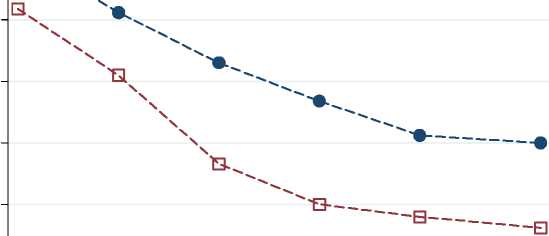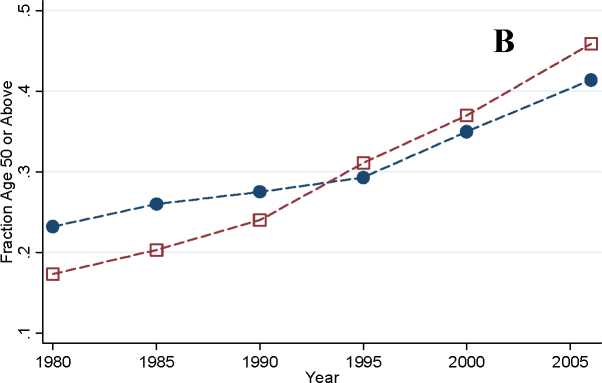“bias” toward scholars over age 50 simply because of demographics. A careful decomposition
of these aging patterns requires further detailed analysis, but it should be clear that extending
training phases and aging of the innovator population are important contributors, just as they are
in understanding broader patterns in invention age over the last century.
Figure 5: Age Shifts for Medical School Faculty and NIH Principle Investigators


о -
1980 1985 1990 1995 2000 2005
Year
—∙— Medical School Faculty —B— Principle Investigators

—*— Medical School Faculty —B— Principle Investigators
Notes: Fig. 5A presents the fraction of the indicated group age 35 are younger, tracking these fractions over time.
Fig. 5B presents the fraction of the indicated group who are at least age 50, tracking these fractions over time.
24
More intriguing information
1. Problems of operationalizing the concept of a cost-of-living index2. The name is absent
3. The name is absent
4. The Impact of Individual Investment Behavior for Retirement Welfare: Evidence from the United States and Germany
5. Technological progress, organizational change and the size of the Human Resources Department
6. The name is absent
7. The name is absent
8. Who is missing from higher education?
9. Luce Irigaray and divine matter
10. APPLYING BIOSOLIDS: ISSUES FOR VIRGINIA AGRICULTURE